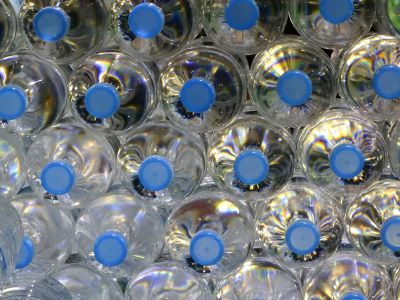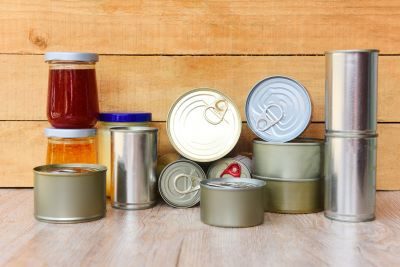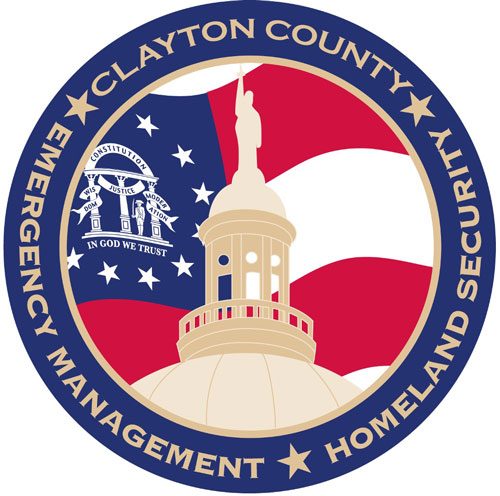
Chief Resilience Officer/Director of Emergency Management
David Vazquez
Phone: (770) 473-5847
1590 Adamson Parkway, Suite 370 Morrow, GA 30260
Operating Hours:
Monday – Friday:
8:00 a.m. – 5:00 p.m.

Build a Kit

A disaster supplies kit is simply a collection of basic items your household may need in the event of an emergency.
Try to assemble your kit well in advance of an emergency. You may have to evacuate at a moment’s notice and take essentials with you. You will probably not have time to search for the supplies you need or shop for them.
You may need to survive on your own after an emergency. This means having your own food, water and other supplies in sufficient quantity to last for at least 72 hours. Local officials and relief workers will be on the scene after a disaster but they cannot reach everyone immediately. You could get help in hours or it might take days.
Additionally, basic services such as electricity, gas, water, sewage treatment and telephones may be cut off for days or even a week, or longer. Your supplies kit should contain items to help you manage during these outages.
Disaster Supply Kit
- Water, one gallon of water per person per day for at least three days, for drinking and sanitation
- Food, at least a three-day supply of non-perishable food
- Battery-powered or hand crank radio and a NOAA Weather Radio with tone alert and extra batteries for both
- Flashlight and extra batteries
- First aid kit
- Whistle to signal for help
- Dust mask to help filter contaminated air and plastic sheeting and duct tape to shelter-in-place
- Moist towelettes, garbage bags and plastic ties for personal sanitation
- Wrench or pliers to turn off utilities
- Manual can opener for food
- Local maps
- Cell phone with chargers, inverter or solar charger
Maintaining Your Kit
- Keep canned food in a cool, dry place.
- Store boxed food in tightly closed plastic or metal containers to protect from pests and to extend its shelf life.
- Throw out any canned good that becomes swollen, dented or corroded.
- Use foods before they go bad and replace them with fresh supplies.
- Place new items at the back of the storage area and older ones in the front.
- Change stored food and water supplies every six months. Be sure to write the date you store it on all containers.
- Re-think your needs every year and update your kit as your family’s needs change.
Keep items in airtight plastic bags and put your entire disaster supplies kit in one or two easy-to-carry containers, such as an unused trashcan, camping backpack or duffel bag.
Kit Storage Location
Since you do not know where you will be when an emergency occurs, prepare supplies for home, work and vehicles.
HOME
Your disaster supplies kit should contain essential food, water and supplies for at least three days.
Keep this kit in a designated place and have it ready in case you have to leave your home quickly. Make sure all family members know where the kit is kept.
Additionally, you may want to consider having supplies for sheltering for up to two weeks.
WORK
You need to be prepared to shelter at work for at least 24 hours. Make sure you have food and water and other necessities like medicines in your kit. Also, be sure to have comfortable walking shoes at your workplace in case an evacuation requires walking long distances.
Your kit should also be in one container and ready to “grab and go” in case you are evacuated from your workplace.
Get more information on building a workplace disaster supplies kit.
VEHICLE
In case you are stranded, keep a kit of emergency supplies in your car. This kit should include:
- Jumper cables
- Flashlights and extra batteries
- First aid kit and necessary medications in case you are away from home for a prolonged time
- Food items containing protein such as nuts and energy bars; canned fruit and a portable can opener
- Water for each person and pet in your car
- AM/FM radio to listen to traffic reports and emergency messages
- Cat litter or sand for better tire traction
- Shovel
- Ice scraper
- Warm clothes, gloves, hat, sturdy boots, jacket and an extra change of clothes
- Blankets or sleeping bags
Also consider:
- A fully-charged cell phone and phone charger
- Flares or reflective triangle
- Baby formula and diapers if you have a small child
Be prepared for an emergency by keeping your gas tank full and if you find yourself stranded, be safe and stay in your car, put on your flashers, call for help and wait until it arrives.
Water
 Water is an essential element to survival and a necessary item in an emergency supplies kit. Following a disaster, clean drinking water may not be available. Your regular water source could be cut-off or compromised through contamination. Prepare yourself by building a supply of water that will meet your family’s needs during an emergency.
Water is an essential element to survival and a necessary item in an emergency supplies kit. Following a disaster, clean drinking water may not be available. Your regular water source could be cut-off or compromised through contamination. Prepare yourself by building a supply of water that will meet your family’s needs during an emergency.
How Much Water Do I Need?
You should store at least one gallon of water per person per day. A normally active person needs at least one gallon of water daily just for drinking however individual needs vary, depending on age, physical condition, activity, diet and climate. To determine your water needs, take the following into account:
- One gallon of water per person per day, for drinking and sanitation.
- Children, nursing mothers and sick people may need more water.
- A medical emergency might require additional water.
- If you live in a warm weather climate more water may be necessary. In very hot temperatures, water needs can double.
- Keep at least a three-day supply of water per person.
How Should I Store Water?
It is recommended you purchase commercially bottled water, in order to prepare the safest and most reliable emergency water supply. Keep bottled water in its original container and do not open until you need to use it. Observe the expiration or “use by” date. Store in cool, dark place.
Preparing Your Own Containers of Water
It is recommended you purchase food grade water storage containers from surplus or camping supplies stores to use for water storage.
Before filling with water, thoroughly clean the containers with dishwashing soap and water and rinse completely so there is no residual soap.
If you chose to use your own storage containers, choose two-liter plastic soft drink bottles – not plastic jugs or cardboard containers that have had milk or fruit juice in them. Milk protein and fruit sugars cannot be adequately removed from these containers and provide an environment for bacterial growth when water is stored in them. Cardboard containers also leak easily and are not designed for long-term storage of liquids. Also, do not use glass containers, because they can break and are heavy.
Storing Water in Plastic Soda Bottles
Follow these steps for storing water in plastic soda bottles:
- Thoroughly clean the bottles with dishwashing soap and water, and rinse completely so there is no residual soap.
- Sanitize the bottles by adding a solution of 1 teaspoon of non-scented liquid household chlorine bleach to a quart of water. Mix the sanitizing solution in the bottle so that it touches all surfaces. After sanitizing the bottle, thoroughly rinse out the sanitizing solution with clean water.
- Fill the bottle to the top with regular tap water. If the tap water has been commercially treated from a water utility with chlorine, you do not need to add anything else to the water to keep it clean. If the water you are using comes from a well or water source that is not treated with chlorine, add two drops of non-scented liquid household chlorine bleach to the water. Let the water stand for 30 minutes before using.
- A slight chlorine odor should be noticeable in the water, if not, add another dose of bleach and allow the water to stand another 15 minutes.
- Tightly close the container using the original cap. Be careful not to contaminate the cap by touching the inside of it with your finger.
- Place a date on the outside of the container so you can know when you filled it. Store in cool, dark place.
- Water can also be treated with water purification tablets that can be purchased at most sporting goods stores.
- Water that has not been commercially bottled should be replaced every six months.
Food
 Consider the following things when putting together your emergency food supplies:
Consider the following things when putting together your emergency food supplies:
- Store at least a three-day supply of non-perishable food.
- Choose foods your family will eat.
- Remember any special dietary needs.
- Avoid foods that will make you thirsty.
- Choose salt-free crackers, whole grain cereals and canned foods with high liquid content.
Following a disaster, there may be power outages that could last for several days. Stock canned foods, dry mixes and other staples that do not require refrigeration, cooking, water or special preparation. Be sure to include a manual can opener and eating utensils.
Suggested Emergency Food Supplies
The following items are suggested when selecting emergency food supplies. You may already have many of these on hand.
- Ready-to-eat canned meats, fruits, vegetables and a can opener
- Protein or fruit bars
- Dry cereal or granola
- Peanut butter
- Dried fruit
- Nuts
- Crackers
- Canned juices
- Non-perishable pasteurized milk
- High energy foods
- Vitamins
- Food for infants
- Comfort/stress foods
Food Safety & Sanitation
Flood, fire, national disaster or the loss of power from high winds, snow or ice could jeopardize the safety of your food. Knowing what to do before and after an emergency can help you reduce your risk of illness and minimize the amount of food that may be lost due to spoilage.
Power outages can occur at any time of the year and it may take from a few hours to several days for electricity to be restored to residential areas. Without electricity or a cold source, food stored in refrigerators and freezers can become unsafe. Bacteria in food grow rapidly at temperatures between 40 and 140 °F, and if these foods are consumed, people can become very sick.
Do:
- Keep food in covered containers.
- Keep cooking and eating utensils clean.
- Keep garbage in closed containers and dispose outside, burying garbage if necessary.
- Keep your hands clean by washing them frequently with soap and water that has been boiled or disinfected.
- Discard any food that has come into contact with contaminated floodwater.
- Discard any food that has been at room temperature for two hours or more.
- Discard any food that has an unusual odor, color or texture.
- Use ready-to-feed formula, if possible, for formula-fed infants. If using ready-to-feed formula is not possible, it is best to use bottled water to prepare powdered or concentrated formula. If bottled water is not available, use boiled water. Use treated water to prepare formula only if you do not have bottled or boiled water.
- Breastfed infants should continue breastfeeding.
Don’t:
- Eat foods from cans that are swollen, dented or corroded, even though the product may look safe to eat.
- Eat any food that looks or smells abnormal, even if the can looks normal.
- Let garbage accumulate inside, both for fire and sanitation reasons.
- Note: Thawed food usually can be eaten if it is still “refrigerator cold.” It can be re-frozen if it still contains ice crystals. To be safe, remember, “When in doubt, throw it out.”
About EMA
Preparedness
Training
LEPC




 Click Clayton
Click Clayton








